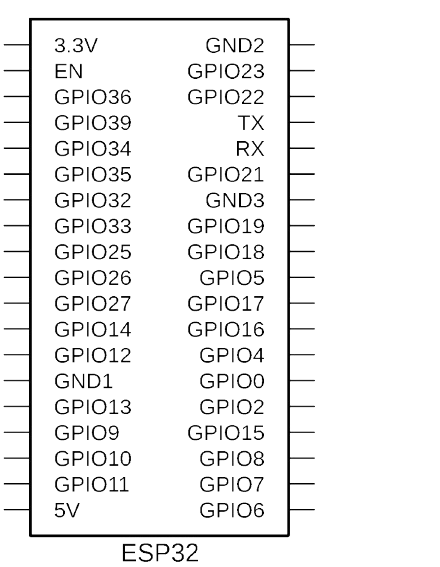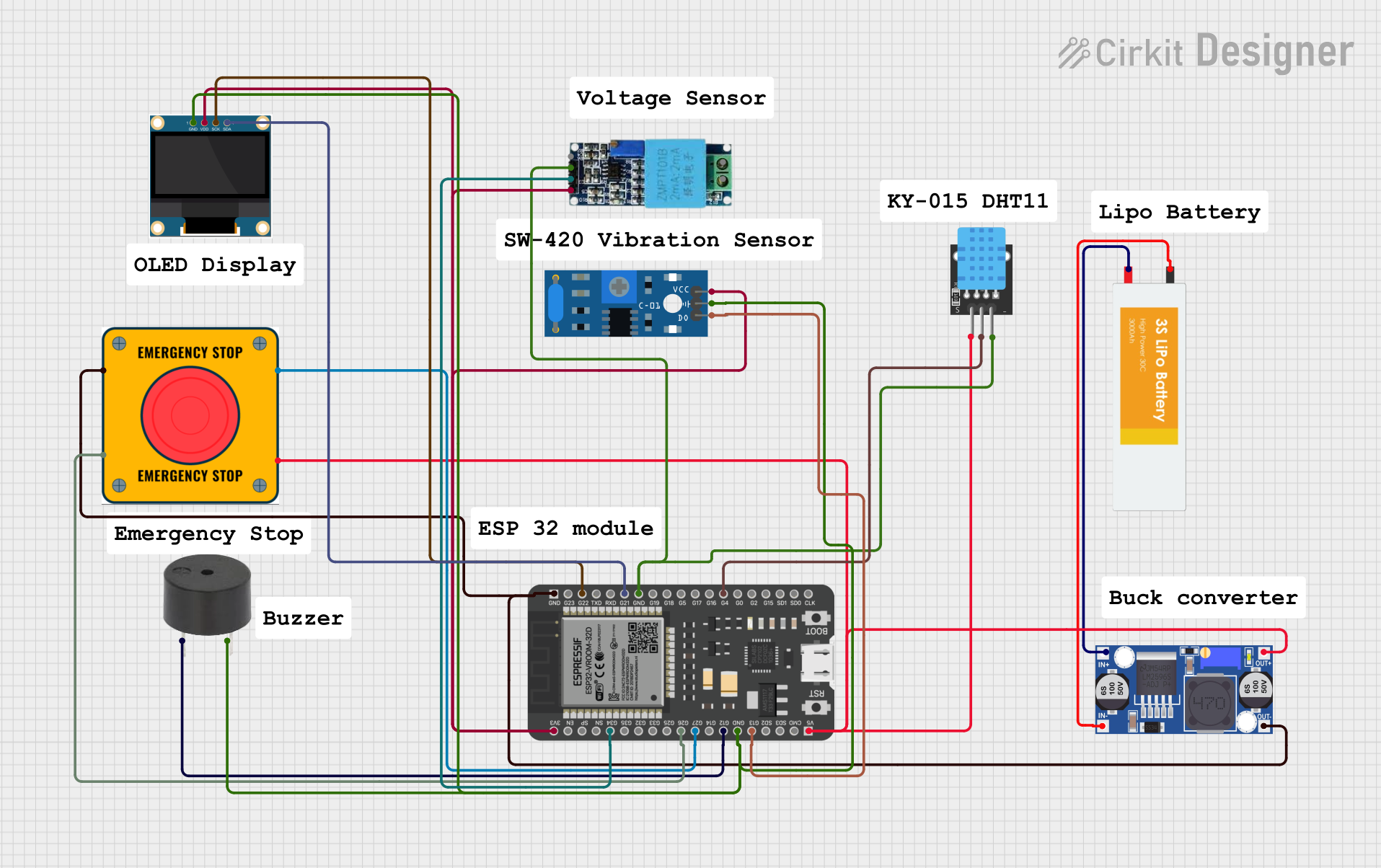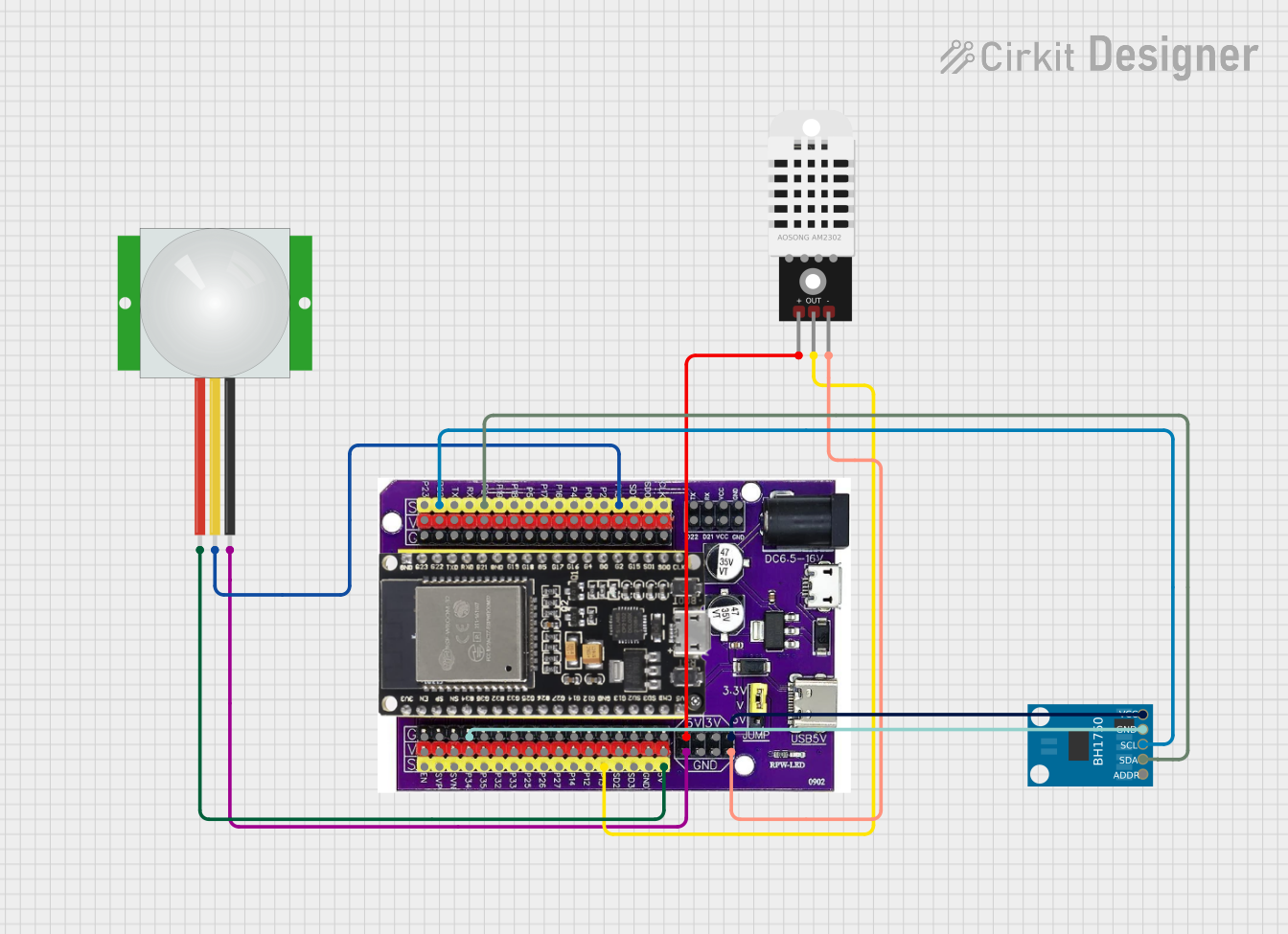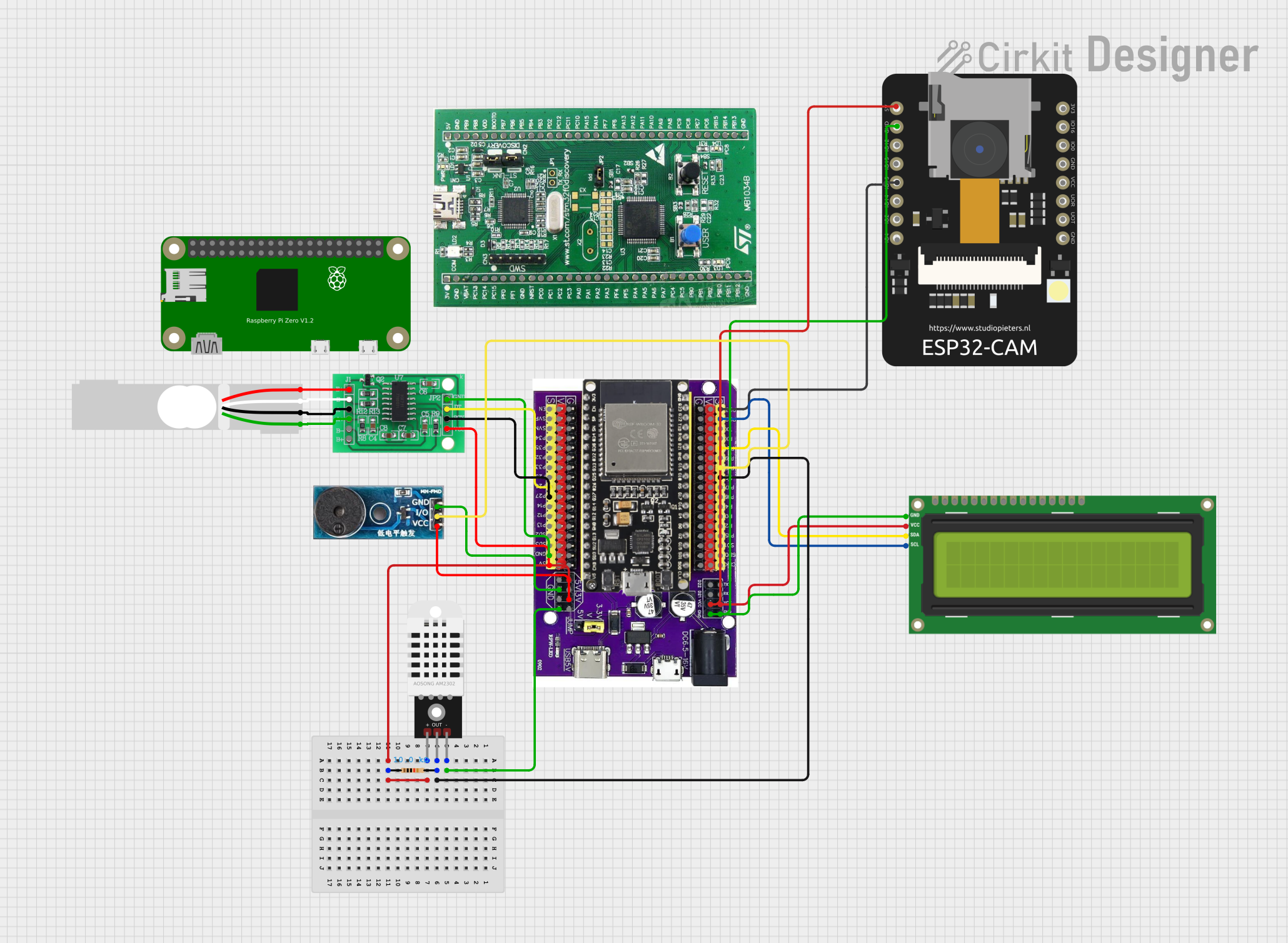
How to Use esp32: Examples, Pinouts, and Specs

 Design with esp32 in Cirkit Designer
Design with esp32 in Cirkit DesignerIntroduction
The ESP32, manufactured by Espressif Systems, is a low-cost, low-power system on a chip (SoC) designed for a wide range of applications. It features integrated Wi-Fi and Bluetooth capabilities, making it an ideal choice for Internet of Things (IoT) projects, smart devices, and embedded systems. The ESP32 is highly versatile, offering dual-core processing, a rich set of peripherals, and support for various communication protocols.
Explore Projects Built with esp32

 Open Project in Cirkit Designer
Open Project in Cirkit Designer
 Open Project in Cirkit Designer
Open Project in Cirkit Designer
 Open Project in Cirkit Designer
Open Project in Cirkit Designer
 Open Project in Cirkit Designer
Open Project in Cirkit DesignerExplore Projects Built with esp32

 Open Project in Cirkit Designer
Open Project in Cirkit Designer
 Open Project in Cirkit Designer
Open Project in Cirkit Designer
 Open Project in Cirkit Designer
Open Project in Cirkit Designer
 Open Project in Cirkit Designer
Open Project in Cirkit DesignerCommon Applications and Use Cases
- IoT devices (e.g., smart home systems, environmental monitoring)
- Wearable electronics
- Wireless sensor networks
- Robotics and automation
- Prototyping and development of connected devices
Technical Specifications
The ESP32 is packed with features that make it a powerful and flexible component for developers. Below are its key technical specifications:
General Specifications
| Parameter | Value |
|---|---|
| Manufacturer | Espressif Systems |
| Part ID | ESP32 |
| Processor | Dual-core Xtensa® 32-bit LX6 microprocessor |
| Clock Speed | Up to 240 MHz |
| Flash Memory | 4 MB (varies by module) |
| SRAM | 520 KB |
| Wireless Connectivity | Wi-Fi 802.11 b/g/n, Bluetooth 4.2 (Classic and BLE) |
| Operating Voltage | 3.0V to 3.6V |
| GPIO Pins | Up to 34 |
| ADC Channels | 18 (12-bit resolution) |
| DAC Channels | 2 |
| Communication Interfaces | UART, SPI, I2C, I2S, CAN, PWM |
| Power Consumption | Ultra-low power modes available |
Pin Configuration and Descriptions
The ESP32 has a flexible pinout, with many pins serving multiple functions. Below is a table of commonly used pins and their descriptions:
| Pin Name | Function(s) | Description |
|---|---|---|
| GPIO0 | Input, Output, Boot Mode | Used for boot mode selection during startup |
| GPIO2 | Input, Output, ADC, PWM | General-purpose pin with ADC and PWM support |
| GPIO4 | Input, Output, ADC, PWM | General-purpose pin with ADC and PWM support |
| GPIO5 | Input, Output, ADC, PWM | General-purpose pin with ADC and PWM support |
| GPIO12 | Input, Output, ADC, PWM | General-purpose pin with ADC and PWM support |
| GPIO13 | Input, Output, ADC, PWM | General-purpose pin with ADC and PWM support |
| GPIO14 | Input, Output, ADC, PWM | General-purpose pin with ADC and PWM support |
| GPIO15 | Input, Output, ADC, PWM | General-purpose pin with ADC and PWM support |
| GPIO16 | Input, Output | General-purpose pin |
| GPIO17 | Input, Output | General-purpose pin |
| EN | Enable | Chip enable pin; active high |
| VIN | Power Input | Input voltage (5V) |
| GND | Ground | Ground connection |
Note: The exact pinout may vary depending on the ESP32 module or development board being used (e.g., ESP32-WROOM-32, ESP32-WROVER).
Usage Instructions
The ESP32 can be used in a variety of circuits and applications. Below are the steps and best practices for using the ESP32 in your projects:
Basic Setup
- Power Supply: Ensure the ESP32 is powered with a stable voltage between 3.0V and 3.6V. If using a development board, you can supply 5V via the VIN pin or USB.
- Programming Environment: Install the Arduino IDE or ESP-IDF (Espressif IoT Development Framework) for programming the ESP32.
- Connections:
- Connect the EN pin to a pull-up resistor (if not already integrated).
- Use GPIO0 for boot mode selection during firmware flashing.
Example: Blinking an LED with Arduino IDE
Below is an example of how to blink an LED connected to GPIO2 using the Arduino IDE:
// Define the GPIO pin where the LED is connected
#define LED_PIN 2
void setup() {
// Set the LED pin as an output
pinMode(LED_PIN, OUTPUT);
}
void loop() {
// Turn the LED on
digitalWrite(LED_PIN, HIGH);
delay(1000); // Wait for 1 second
// Turn the LED off
digitalWrite(LED_PIN, LOW);
delay(1000); // Wait for 1 second
}
Important Considerations
- Boot Mode: Ensure GPIO0 is pulled low during firmware flashing and high during normal operation.
- Voltage Levels: The ESP32 operates at 3.3V logic levels. Use level shifters if interfacing with 5V devices.
- Antenna Placement: For optimal Wi-Fi and Bluetooth performance, ensure the onboard antenna is not obstructed by metal or other conductive materials.
Troubleshooting and FAQs
Common Issues and Solutions
ESP32 Not Detected by Computer:
- Ensure the correct USB driver is installed (e.g., CP2102 or CH340, depending on the board).
- Check the USB cable for data transfer capability (some cables are power-only).
Failed to Upload Code:
- Verify that GPIO0 is pulled low during flashing.
- Check the COM port and board settings in the Arduino IDE or ESP-IDF.
Wi-Fi Connection Issues:
- Ensure the correct SSID and password are used in your code.
- Check for interference or weak signal strength.
Overheating:
- Verify that the ESP32 is not drawing excessive current.
- Use proper heat dissipation techniques if operating in high-power modes.
FAQs
Q: Can the ESP32 operate on battery power?
A: Yes, the ESP32 supports ultra-low power modes, making it suitable for battery-powered applications.
Q: How do I reset the ESP32?
A: Press the reset button on the development board or toggle the EN pin.
Q: Can I use the ESP32 with 5V logic devices?
A: No, the ESP32 operates at 3.3V logic levels. Use level shifters for compatibility with 5V devices.
Q: What is the maximum range of the ESP32's Wi-Fi?
A: The range depends on environmental factors but typically extends up to 100 meters in open space.
By following this documentation, you can effectively integrate the ESP32 into your projects and troubleshoot common issues.